History is like the backwards mirror on a car, you always have to take a good look when driving forward.
Apple has been on the hot seat twice recently: a month ago, the iPod was officially discontinued. Last week, Apple's Worldwide Developers Conference unveiled the 'iOS 16 Custom Lock Screen' feature. The former came out of a nostalgic nostalgia for the 'peninsula tin box' of the early 21st century, and the latter signaled a lot of discontent with Apple's fancy 'Android-style' design.
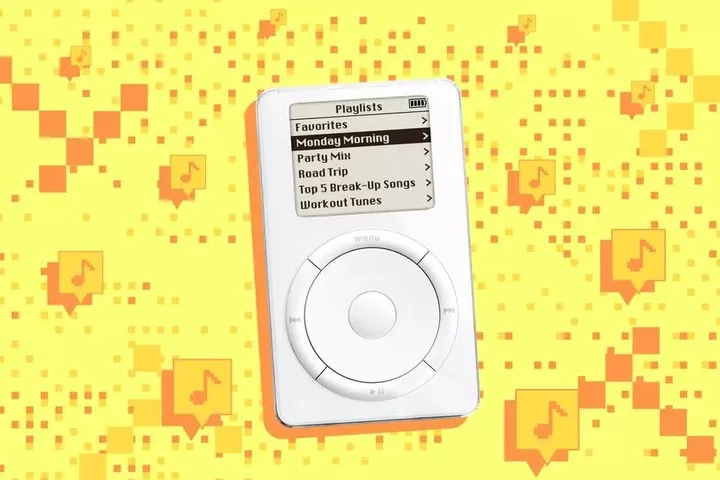
The biggest innovations of the iPod are the click wheel, user interface, size, battery life, fast transfer charging cable, capacity, USB flash drive storage, ease of use, and the combination of features that sync with iTunes-everywhere is a plus
The simple, restrained, elegant design of iPod is often overwhelmed by comments about its 'compactness' and 'portability'. The more dazzling the trends, the harder it is to hide the craftsmanship of the iPod, even as its time has come to an end.
Consumer electronic devices define modern life. The question is, what do these devices 'should' look like, what features should they have, and how should the features be designed and arranged?
Behind the iPod, the design concepts of Constructivism, Bauhaus Modernism and Minimalism, which were all the rage in the last century, are the keys to understanding what 'modern living' is.
Art meets factory
The iPod and the Braun T3 pocket radio are particularly similar: both have clean lines, rounded corners and a 'white block' with a round control panel. The only difference is that one has a speaker and the other has an LCD display.
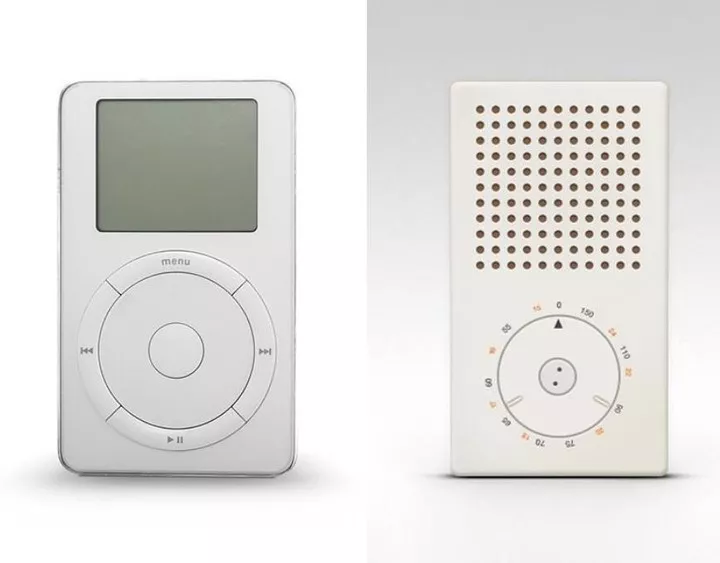
▲iPod (left) and Braun T3 Pocket Radio (right) perfectly reflect the level of detail and functionality of the product
The German Braun products are a favorite of both Steve Jobs, co-founder and former CEO of Apple, and Jonny Ivey, former chief design officer. Not only the iPod, but a large number of Apple products pay fond 'homage' to Braun's devices.
Like the Braun T1000 radio with the Mac Pro, the Braun LE1 speaker with the iMac, and the Braun infrared transmitter with the iSight camera.
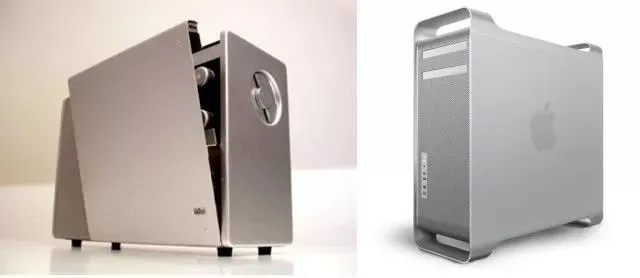
▲ Braun T1000 radio (left) and Mac Pro (right)
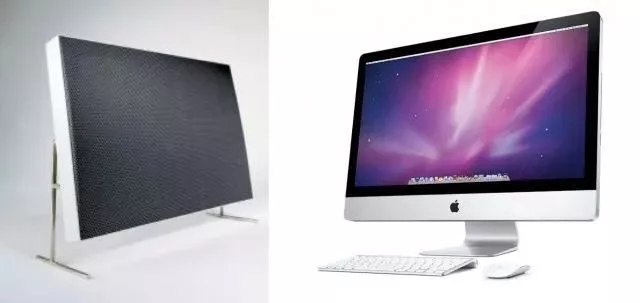
▲ Braun LE1 speakers (left) and iMac (right)
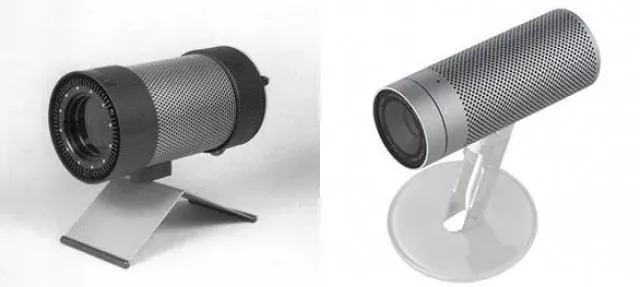
▲ Braun infrared emitter (left) and iSight (right)
Most of these Braun products are the work of Dieter Rams, the German designer known as the 'godfather of design', who created lifestyle devices in the 1950s and 1960s that set the aesthetic trend of the age and continue to do so today. His clocks, radios, calculators, cameras and kitchen appliances for Braun made Jonny Ivey lament that he could not "improve" them one step further.
The famous designer Philippe Starck once said to Ramsay "Apple is stealing from you", to which Ramsay humorously responded "Imitation is the sincerest form of flattery".
"Less but better." Ramsay's quote echoes Mies van der Rohe's "Less is more" quote, a modernist architect. Apple follows a similar philosophy, and the 'minimalist' style is still very much alive today.
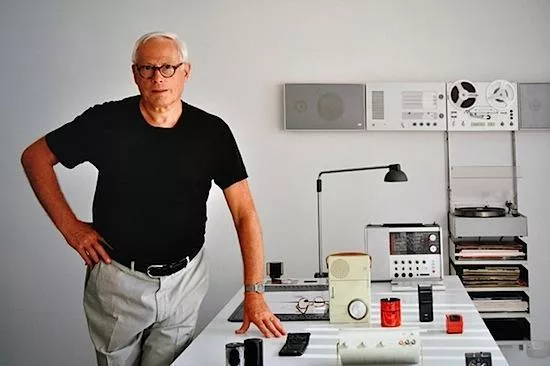
▲Diette Ramsay and his design work
Originally an architect, Dieter Ramsay joined German electrical appliance manufacturer Braun in 1955 to work on office interiors. He turned by chance to industrial design, and in the late 1970s he distilled his design philosophy into ten principles. This writing of design principles is highly
Good design is innovative.
Good design makes products useful.
Good design is aesthetic.
Good design makes the product easy to understand.
Good design is honest.
Good design is unobtrusive.
Good design is lasting.
Good design is thorough down to the last detail.
Good design is environmentally friendly.
Of course, good design is as little design as possible.

The products represented by Dieter Ramsay, from top to bottom and left to right, are: Radio-Phonograph; TP1 Portable Electric Phonograph; Razor; SK 4 Radio Phonograph, dubbed "Snow White's Coffin" by the British; PS2 Stereo Phonograph; RT 20 tischsuper Radio; L450 Flat Panel Speaker, TG 60 Disc Recorder and the TS 45 controller
Ramsay designs appliances that are functional, easy to use and built to last. At first glance they don't look that impressive, but with time you can appreciate the elegance and simplicity they exude, as well as their timeless 'modern' flavour - even if the earliest products are over 60 years old today.
Ramsay's 'mentor' was Fritz Eichler (1911-1991). Eichler set the direction for Braun within a year, using "total design" as his guiding principle. This approach was known as "art meets factory": he actively collaborated by contacting creative artistic talents at the university, while combining design with in-house technical development.
Ramsay and Eichler probably didn't think at the time that Braun's design philosophy would be highly respected by Jobs and Zhang and reflected in the design of Apple and WeChat products, which in turn influenced billions of people.
Form follows function
When Max Braun, the founder of the German company Braun, died of a sudden heart attack in 1951, his two sons, Irving Braun and Artur Braun, were on the brink: one at the age of 30 and the other at 26. When the Braun brothers took over, they intended to make a 'major change' in product style; Braun products 'should be made for people who are open to a modern lifestyle, who care about authenticity and quality'.

▲ Self-Portrait by Fritz Eichler
Irving Boland met Fritz Eichler, then an Army radio operator, during the Second World War. Previously, Eichler had studied art history and theatre in Berlin and Munich, and in 1935 received a doctorate in theatre studies with a thesis on the design of hand puppets and puppet shows. Just after World War II, he moved to Frankfurt to work as a director and commercial filmmaker, and in 1955 he was invited by Irving to step into Braun's company with their common goal: What does the Germany of the future need?

▲Puppets made by Fritz Eichler
At that time Braun didn't have a design department at all. Eichler was there to 'advertise' and Ramsay was the interior designer. Eichler became the first design director in 1960 and then joined the supervisory board in 1973, where he remained until his 'retirement' in 1990. Ramsay served as chief designer from 1961-1995.
Eichler said in an interview late in life that ornate equipment was appropriate for a stage setting but not for a modern apartment with elegant decor. Therefore, the equipment should be unobtrusive and functional, like the silent servant. At the same time, the function of the equipment should be identified in a clear form. People will like these devices and enjoy living with them.
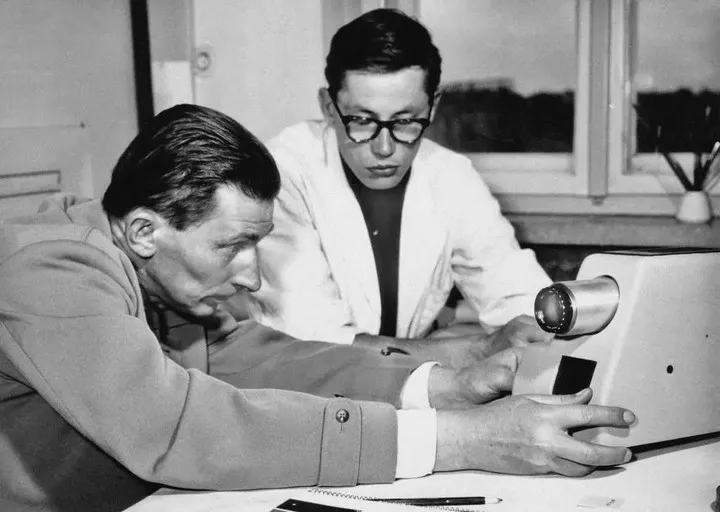
▲ Fritz Eichler (left) and Dieter Ramsay (right)
Eichler's "masterpieces" included the phonographs SK 1 and SK 2, and the KM 3 food processor. Ramsay designed the SK 4, known as "Snow White's coffin", the T 52 portable radio (1961) and the T 1000 radio (1963), and the high-quality D series slide projectors D 45 and D 46. His 606 universal locker system for furniture manufacturer Vitsoe (1960) also became a classic.
Eichler and Ramsay elevated design to a strategic level throughout the company, and their role was much like that of today's product managers, both with management, keeping a close eye on product development, and as designers, planning the tone of the products. Eichler's practical experience in theater and film, as well as his appreciation of art history, made the household appliance manufacturer, in one fell swoop, the most luminous aesthetic voice of the 20th century.
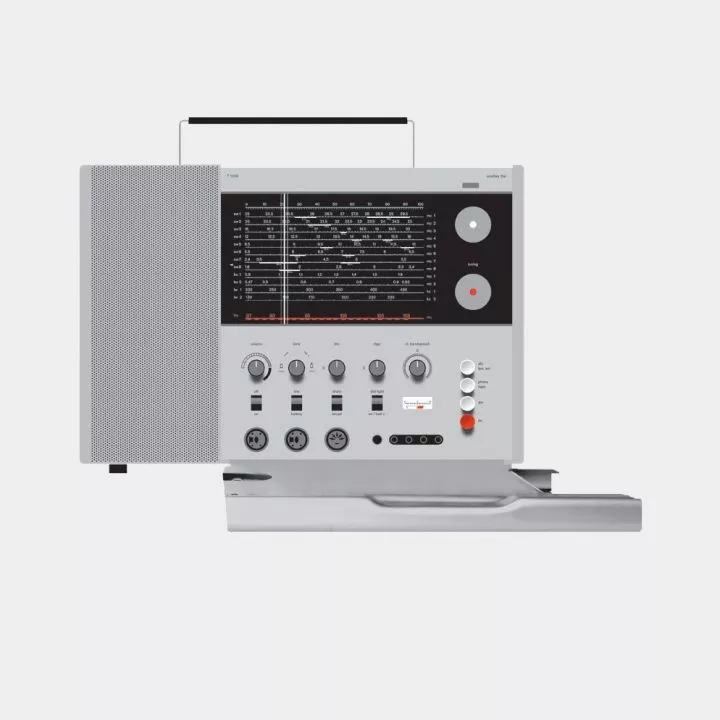
The famous T100 radio, especially the red dot, is similar to the computer HAL from 2001 A Space Odyssey?
Eichler, like Ramsay, was a staunch 'functionalist'. In a deathbed interview, Eichler said that "for a device that has the functionality to be implemented, I can't imagine that functionality not being the starting point of the design".
The silent servant?
Eichler and Ramsay's design philosophy is, in summary, a return to purity and simplicity.
Their design work brings the world to life with clear, orderly observations and suggestions. The calmness, introspection and deliberation that flows from every detail reveals the artist's inherent desire to bring 'order' to the world.
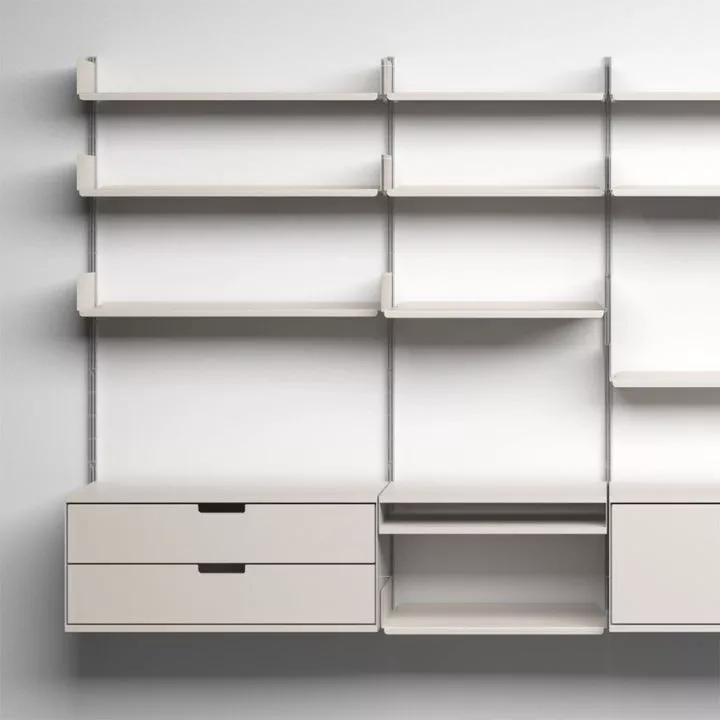
The Vitsœ 606 universal locker system by Ramsay, in which one can find the designer's desire to "create order".
For it was a time of chaos. The oil crisis was global, the Bretton Woods system was collapsing, Apollo was on the moon, debauched hippies were seeking new experiences for the soul and the body, the May Storm opened up the corner of a capitalist world on fire, and the Cuban missile crisis made people realize that being alive was just a fluke after the fact.
The 'minimalist' trend, which lasted from 1960 to 1975, resisted the surging emotions of the times with puritanical restraint. Minimalist artists, also known as the 'men's club', were generally obsessed with mechanically cold work, devoid of romance, and working in a style similar to that of engineers who plan, give orders and oversee production.
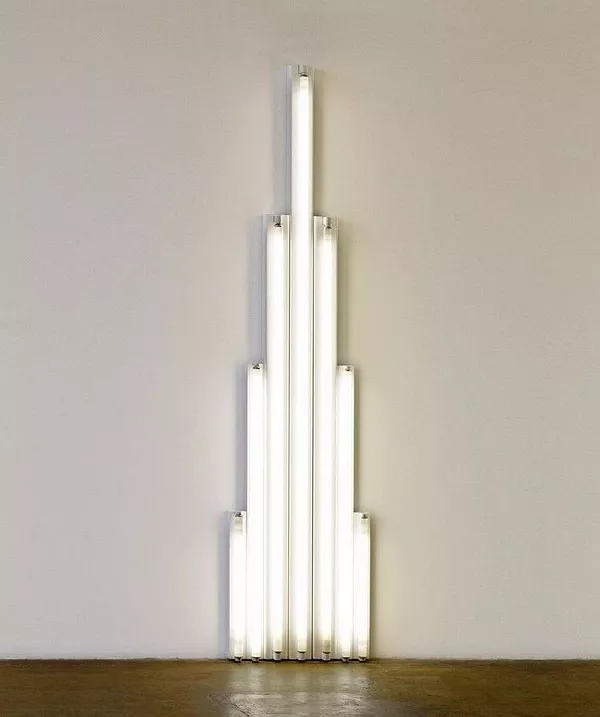
▲ Minimalism, Dan Frewen, "Monument to V. Tatlin 1" 1964
Similar to the Pop artists, the minimalist artists likewise erase personal traces from their work, rejecting any indication of emotion and subjectivity.

▲ Minimalism, Donald Judd "Untitled (Stacked)" 1967
Minimalist art has clear shades of the Bauhaus of the 1920s: unpretentious and tasteful - the Volkswagen Beetle, Penguin book covers, pencil skirts, large white spaces at the Museum of Modern Art in New York, the Guggenheim and the Tate Modern... ...
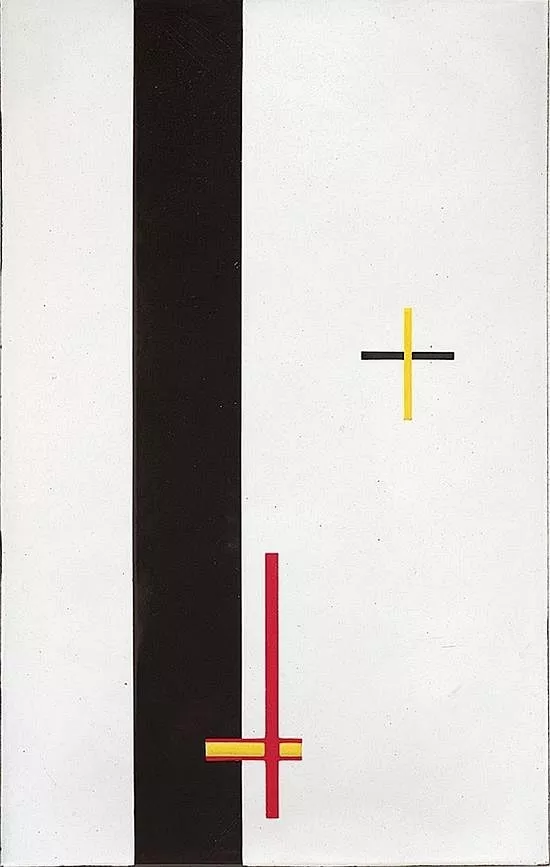
▲xxx Bauhaus, Moholy-Nagy "Telephone EM1" 1922
The Bauhaus originated from the left-wing Craft Union, which proclaimed that "art is created by the people and for the people", opposed utilitarianism and called for "a more civilized and less selfish society". "From Lincoln Center in New York to the "Top Ten Buildings" in Beijing, we can see the embodiment of Bauhaus simplicity, restraint and elegance.

▲ Bauhaus, Adler & Sullivan's Wainwright House 1890-1892
Minimal art also has shades of Constructivism. Minimal art was also known at the time as 'space-age art', about precision and relentless stripes. Minimal artists were not only like engineers, but also like scientists, exploring matter, systems, volumes, masses - that's what the Eichler team got from 'what the Germany of the future wants'. Not only Germany, but the whole world needs such a 'feeling'.
The vast majority of scenes in the film 2001 A Space Odyssey by the famous director Kubrick are very 'minimalist'. The large white spaces, the empty, tightly packed spaceships, and the cold, simple, central computer HAL - it's like a Braun product. In particular, the 'black monolith' that appears at the end of the film, a huge, smooth, cold, sharp-edged black monolith, allows the audience to discover endless possibilities in its interpretation.

The movie "2001 A Space Odyssey" (1968) poster, we don't know where we're going either
Constructivism flourished around the 1920s. The most famous work is Malevich's Black Square (1923), in which there is only a black square on the canvas, and the viewer can contemplate the border between black and white, the balance between the two, observe the texture of the paint, and feel the lightness of the white and the heaviness of the black. Malevich believed that he had lifted "the weight that the objective image had placed on art," and this was the benefit of abstract art.

▲ Few people 'get' 'Black Squares'
When Eichler said that "electronic consumer devices define modern life," televisions, cell phones, and personal computers had not yet entered the homes of millions of people. Today, as we gaze around us, the paradoxical relationship between appliances and people has never been more profound. As we use them, they are defining and domesticating the 'gender' 'role' and 'power' of their users.
In the family, who uses the washing machine, who cleans it, who cooks on the gas stove, who washes the dishes in the dishwasher, who is monopolizing the game console, who is watching the variety show on the TV ...... It is in the uncountable contest of 'use' that we define our lives, define our 'control' over the family, and unconsciously complete the imitation of roles and The distribution.

▲ Braun MPZ 21 Multi-Stage Juicer
The inseparable mobile phone has simply become another organ of the human body. When the 'intermediary' becomes the human being itself, is its function truly 'achieved'?
Is the perfectly functional, beautifully designed and endlessly available electronic device still the 'silent servant'?
This must be the question that both Eichler and Ramsay wish to answer. Minimalism itself contains a reflection on consumerism. Behind the calm, objective, rigorous and beautiful design of all products, an attitude of 'moderation' is conveyed, a design that does not serve 'frivolous consumption'.
The black humor is that today, the more minimalist a product is, the more it stimulates the desire to consume it.